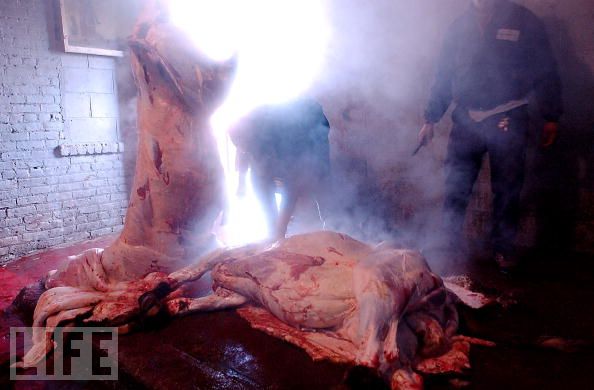McDermott, Terry. "Burger Bacteria Hard To Trace in Blending Process." Times-Picayune [New Orleans] 12 Feb. 1993, National ed.: A2. Print
Article on E.coli bacteria found in Jack In The Box hamburgers. The USDA trying to figure out where the tainted beef originated from and what caused it. Also talks about how hamburger meat is processed.
Iggers, Jeremy. "Cattle Call; Grass-fed and Organic Beef Are Becoming More Popular as Consumers Seek Foods That Are More Healthful and Friendly to the Enviroment." Star Tribune [Minneapolis] 9 Oct. 2003, Metro ed., Taste sec.: 1T. Print.
Article on how people are traveling distances in oreder to purchase grass-fed organically raised beef. Talks about health related issues and tase differences in grass-fed amd grain-fed beef. Costs involved in running grass-fed organic farms. Also gives locations of organic farms.
Squires, Sally. "What's the Beef?" Washington Post 1 Aug. 2006, Final ed., Health sec.: F01. Print
Article on USDA standards for labeling beef. The standards for differences of grass-fed, certified organic and black angus beef. Has health and nutritional differences and discusses tast differences.
Sagon, Candy. "Grass-Fed Beef Called Healthier." Washington Post 15 Mar. 2006, Final ed., Food sec.: F01. Print
Report that grass-fed cows are higher in beneficialfatty acids from Union of Concerned Scientist. Report compares omega 3 levels. It also discusses tast differences between grass and grain fed cattle. Also the price difference in purchasing the two.
Segelken, Roger. "CU and USDA: Cattle Feeding Change Could Cut E.coli Risk." Cornell Chronicle [Massachusetts] 17 Sept. 1998. Print
Cornell University newspaper atricle of research done on how cattles diets could reduce E.coli. The study shows that in as little as 5 days of feeding grass the bacteria count is reduced. The study is supported by the USDA.
Subscribe to:
Post Comments (Atom)



No comments:
Post a Comment